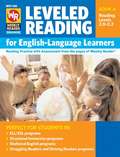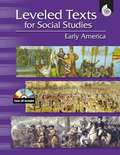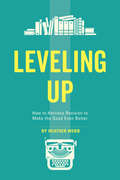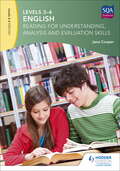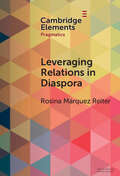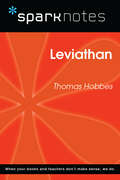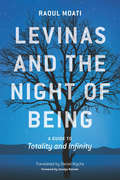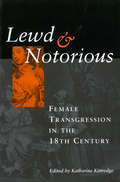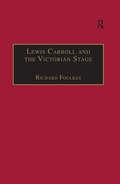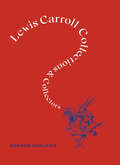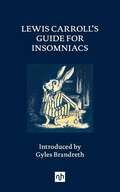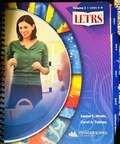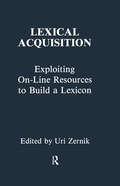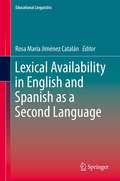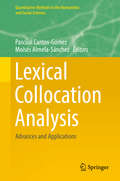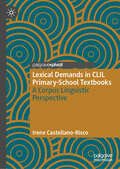- Table View
- List View
Let’s Learn English Part-2 - Pupil’s Book class 2 - MIE
by Mauritius Institute of EducationThe English textbook for Grade 2 students in Mauritius, developed by the Mauritius Institute of Education, presents a captivating curriculum in its Table of Contents (Part 2). Units 5 to 8 cover diverse themes including Travel and Journeys, Pets, Gardening, and A World of Dreams and Magic. Students engage in activities ranging from reading, writing, and vocabulary to grammar, phonics, ICT, projects, and stories. Unit 5 delves into transportation, opposites, and Gulliver's travels, while Unit 6 explores various pets, emphasizing care and communication. Gardening, the focus of Unit 7, introduces planting, tools, and animals. Lastly, Unit 8 sparks creativity with imaginative stories and poems, addressing gender, sounds, and wild creatures. Each unit incorporates hands-on activities like crafting, writing notes, and listening to enriching stories, fostering holistic language development for Grade 2 learners.
Level 7 Reader (Specialized Program Individualizing Reading Excellence)
by Sheila Clark-Edmandspecialized Program Individualizing Reading Excellence Reader Level 7 3rd Edition
Level 8 Reader (Specialized Program Individualizing Reading Excellence)
by Sheila Clark-EdmandsSpecialized Program Individualizing Reading Excellence 3rd Edition Reader Level 8
Level 8 Workbook (Specialized Program Individualizing Reading Excellence)
by Sheila Clark-EdmandsSpecialized Program Individualizing Reading Excellence 3rd Edition Workbook Level 8
Leveled Reading for English-language Learners: 2. 0-3. 2 (Leveled Reading for Ell Ser.)
by Weekly Reader CorporationLeveled Reading For English-language Learners
Leveled Texts for Social Studies: Early America
by Debra J. HouselStep into early America and explore 15 differentiated social studies texts with topics ranging from exploring the New World to The Bill of Rights. Leveled Texts for Social Studies: Early America is an award-winning resource designed to help all students grasp important historical people and events through high-interest text written at four different reading levels. Each text is presented in a two-page format and complemented with comprehension questions written at each reading level. Give all students access to the curriculum and build content-area literacy skills with these seamlessly differentiated texts
Leveling Up: How to Harness Revision to Make the Good Even Better
by Heather WebbRevision isn't just a hoop you need to jump through on your way to publishing success--it's a vital and powerful tool you can harness to make your already-good first draft even better. In "Leveling Up," Heather Webb offers sage advice for elevating the revision process. This exclusive e-book is filled with techniques for including symbols and metaphors, foreshadowing, looking closely at your secondary characters, and more. Heather Webb is a historical fiction author, freelance editor, and blogger at the award- winning writing sites Writer Unboxed and Writers in the Storm. Her works have been translated into three languages and have received national starred reviews. Heather is a member of the Historical Novel Society and the Women's Fiction Writers Association, and she may also be found teaching craft-based courses at a local college. Visit her at www.heatherwebb.net for more information.
Levels 3-4 English: Reading For Understanding, Analysis And Evaluation Skills
by Jane CooperExam Board: SQALevel: S1-S3Subject: EnglishFirst Teaching: September 2013First Exam: June 2014This book brings together the essential close reading skills needed by students taking part in the Broad General Education, Levels 3-4 (in S1 to S3).Split into two parts, the first section uses examples, models and active-learning tasks to teach key concepts of reading for understanding, analysis and evaluation. The second section provides 15 practice assessments, based on a variety of fiction and non-fiction texts, which become progressively more challenging. As well as allowing learners to demonstrate BGE reading skills, this section serves as a useful precursor to the style of assessment encountered later on at National levels.This book will help students to:- develop their close reading abilities- understand the distinction between key ideas and supporting details- analyse writers' language and style via a broad range of sample texts.
Levels 3-4 English: Reading for Understanding, Analysis and Evaluation Skills
by Jane CooperExam Board: SQALevel: S1-S3Subject: EnglishFirst Teaching: September 2013First Exam: June 2014This book brings together the essential close reading skills needed by students taking part in the Broad General Education, Levels 3-4 (in S1 to S3).Split into two parts, the first section uses examples, models and active-learning tasks to teach key concepts of reading for understanding, analysis and evaluation. The second section provides 15 practice assessments, based on a variety of fiction and non-fiction texts, which become progressively more challenging. As well as allowing learners to demonstrate BGE reading skills, this section serves as a useful precursor to the style of assessment encountered later on at National levels.This book will help students to:- develop their close reading abilities- understand the distinction between key ideas and supporting details- analyse writers' language and style via a broad range of sample texts.
Leveraging Relations in Diaspora: Occupational Recommendations among Latin Americans in London (Elements in Pragmatics)
by Rosina Márquez ReiterThis Element expands the horizon of sociopragmatic research by offering a first inquiry into the sociocultural norms that underlie the establishment and maintenance of interpersonal relations in a diasporic context. Based on accounts of the practices that Spanish-speaking Latin Americans engage in pursuit of employment, primarily gathered in life-story interviews, it captures the social reality of members of this social group as they build interpersonal relations and establish new contractual obligations with each other away from home. It examines occupational recommendations as a diasporic relational practice whereby the relationship between the recommender and the recommendee becomes part of the value being exchanged and the moral order on which the practice is established and maintained through an interlocked system of favours. The Element offers new social pragmatics insights beyond the dyad in a contemporary globalised context characterised by social inequality.
Leviathan (SparkNotes Philosophy Guide)
by SparkNotesLeviathan (SparkNotes Philosophy Guide) Making the reading experience fun! SparkNotes Philosophy Guides are one-stop guides to the great works of philosophy–masterpieces that stand at the foundations of Western thought. Inside each Philosophy Guide you&’ll find insightful overviews of great philosophical works of the Western world.
Levinas and the Night of Being: A Guide to Totality and Infinity
by Raoul MoatiCan we say that metaphysics is over? That we live, as post-phenomenology claims, after “end of metaphysics”? Through a close reading of Levinas's masterpiece Totality and Infinity, Raoul Moati shows that things are much more complicated.Totality and Infinity proposes not so much an alternative to Heidegger’s ontology as a deeper elucidation of the meaning of “being” beyond Heidegger’s fundamental ontology. The metaphor of the night becomes crucial in order to explore a nocturnal face of the events of being beyond their ontological reduction to the understanding of being. The deployment of being beyond its intentional or ontological reduction coincides with what Levinas calls “nocturnal events.” Insofar as the light of understanding hides them, it is only through deformalizing the traditional phenomenological approach to phenomena that Levinas leads us to their exploration and their systematic and mutual implications. Following Levinas's account of these "nocturnal events," Moati elaborates the possibility of what he calls a "metaphysics of society" that cannot be integrated into the deconstructive grasp of the "metaphysics of presence." Ultimately, Levinas and the Night of Being opens the possibility of a revival of metaphysics after the "end of metaphysics".
Lewd and Notorious: Female Transgression in the Eighteenth Century
by Katharine KittredgeAccounts of women's transgressive behavior in eighteenth-century literature and social documents have much to teach us about constructions of femininity during the period often identified as having formed our society's gender norms. Lewd and Notorious explores the eighteenth century's shadows, inhabited by marginal women of many kinds and degrees of contrariness. The reader meets Laetitia Pilkington, whose sexual indiscretions caused her to fall from social and literary grace to become an articulate memoirist of personal scandal, and Elizabeth Brownrigg, who tortured and starved her young servants, propelling herself to an infamy comparable to Susan Smith's or Myra Hindley's. More awful women wait between these covers to teach us about society's reception (and construction) of their debauchery and dangerousness. The authors draw upon a rich range of contemporary texts to illuminate the lives of these women. Astute analysis of literary, legal, evangelical, epistolary, and political documents provides an understanding of 1700s womanhood. From lusty old maids to murderous mistresses, the characters who exemplify this period's vision of women on the edge are essential acquaintances for anyone wishing to understand the development and ramifications of conceptions of femininity.
Lewis Carroll and the Victorian Stage: Theatricals in a Quiet Life (The Nineteenth Century Series)
by Richard FoulkesAuthor of the enduringly popular Alice books, mathematician, Anglican cleric, and pioneer photographer, Lewis Carroll maintained a lifelong enthusiasm for the theatre. Lewis Carroll and the Victorian Stage is the first book to focus on Carroll's irresistible fascination with all things theatrical, from childhood charades and marionettes to active involvement in the dramatisation of Alice, influential contributions to the debate on child actors, and the friendship of leading players, especially Ellen Terry. As well as being a key to his complex and enigmatic personality, Carroll's interest in the theatre provides a vivid account of a remarkable era on the stage that encompassed Charles Kean's Shakespeare revivals, the comic genius of Frederick Robson, the heyday of pantomime, Gilbert and Sullivan, opera bouffe, the Terry sisters, Henry Irving, and favourite playwrights Tom Taylor, H. A. Jones, and J. M. Barrie. With attention to the complex motives that compelled Carroll to attend stage performances, Foulkes examines the incomparable record of over forty years as a playgoer that Carroll left for posterity.
Lewis Carroll's Alice's Adventures in Wonderland and Through the Looking-Glass: A Publishing History (Ashgate Studies In Publishing History: Manuscript, Print, Digital Ser.)
by Eugene Giddens Zoe JaquesEmerging in several different versions during the author's lifetime, Lewis Carroll's Alice novels have a publishing history almost as magical and mysterious as the stories themselves. Zoe Jaques and Eugene Giddens offer a detailed and nuanced account of the initial publication of Alice's Adventures in Wonderland and Through the Looking-Glass and investigate how their subsequent transformations through print, illustration, film, song, music videos, and even stamp-cases and biscuit tins affected the reception of these childhood favourites. The authors consider issues related to the orality of the original tale and its impact on subsequent transmission, the differences between the manuscripts and printed editions, and the politics of writing and publishing for children in the 1860s. In addition, they take account of Carroll's own responses to the books' popularity, including his writing of major adaptations and a significant body of meta-textual commentary, and his reactions to the staging of Alice in Wonderland. Attentive to the child reader, how changing notions of childhood identity and needs affected shifting narratives of the story, and the representation of the child's body by various illustrators, the authors also make a significant contribution to childhood studies.
Lewis Carroll: Collections and Collectors
by Edward GuilianoThis is the first book on the history and culture of collecting the works of Lewis Carroll as well as the worldwide industry of items and art based on Carroll&’s works in popular culture. Ten large, major private collections from around the world are profiled, telling the story of each collection and collector, with color illustrations of objects from the collections. The volume, which also covers smaller specialized collections and includes a comprehensive introduction to the history and characteristics of collecting Carrolliana, will appeal to Carroll enthusiasts and rare book and memorabilia collectors alike.
Lewis Carroll’s Guide for Insomniacs
by Lewis CarrollHere is the perfect gift for all insomniacs: a feast of intriguing puzzles, rhymes, limericks, and other entertainments devised by the author of Alice in Wonderland to help pass what he called &“the wakeful hours.&”&“The dilemma my friends suppose me to be in,&” said Lewis Carroll, author of Alice in Wonderland, &“has, for its two horns, the endurance of a sleepless night, and the adoption of some recipe for inducing sleep.&” In this delightful book, therefore, are collected a splendid variety of the things he devised to help rid himself of insomnia.They range from simple number problems and calming calculations to a number of whimsical activites: composing rhymes at midnight, conjuring up ghosts, planning dreams, devising shadow shows, and writing in the dark by means of Nyctograph. Take Carroll&’s advice and the &“wakeful hours&” can be turned to your advantage.
Lexia LETRS Volume 2: Units 5-8
by Louisa C. Moats Carol A. TolmanInstructor guide to LETRS Reading and Spelling Program. LETRS is a professional development course that empowers teachers to understand the what, why and how of literacy instruction, based on the most current scientific research.
Lexical Acquisition: Exploiting On-line Resources To Build A Lexicon
by Uri ZernikOn-line information -- and free text in particular -- has emerged as a major, yet unexploited, resource available in raw form. Available, but not accessible. The lexicon provides the major key for enabling accessibility to on-line text. The expert contributors to this book explore the range of possibilities for the generation of extensive lexicons. In so doing, they investigate the use of existing on-line dictionaries and thesauri, and explain how lexicons can be acquired from the corpus -- the text under investigation -- itself. Leading researchers in four related fields offer the latest investigations: computational linguists cover the natural language processing aspect; statisticians point out the issues involved in the use of massive data; experts discuss the limitations of current technology; and lexicographers share their experience in the design of the traditional dictionaries.
Lexical Availability in English and Spanish as a Second Language
by Rosa María Jiménez CatalánThis volume contributes to the research in two different research areas: lexical availability studies and vocabulary research in second or foreign languages. Lexical availability is defined as the words that immediately come to mind as a response to a stimulus provided by topics related to domains closely connected to daily life: for instance animals, food and drink, daily activities, politics, or poverty. Lexical availability is a dimension of learners' receptive and productive lexical competence, and, consequently, an important variable of learners' communicative competence. Written by leading researchers in Spanish and English applied linguistics, the studies presented in this volume offer the reader findings and insights from studies conducted in learners with different mother tongues, who learn English or Spanish as their second or third language. "This book made me aware of an approach to vocabulary acquisition which has a long tradition in European research, but has been somewhat neglected by English-speaking researchers. The methodology was pioneered in France where it developed into the Francais Fondamental project - an influential approach to the vocabulary needs of learners of French. It was also taken up by Spanish researchers, and more recently developed by the team at La Rioja University. Where English-language research has focused on the frequency of words in large corpora and the implications of this feature for L2 vocabulary acquisition, the lexical availability tradition takes a much more learner-centred approach to L2 vocabulary skills, directly reflecting learners' needs and learners' ability to do things with small, effective vocabularies. This leads to a set of research priorities that look refreshingly different from the ones we are used to. Read this book. It might change the way you think about vocabulary research." Paul Meara, Swansea University, Wales, UK
Lexical Collocation Analysis: Advances and Applications (Quantitative Methods in the Humanities and Social Sciences)
by Pascual Cantos-Gómez Moisés Almela-SánchezThis book re-examines the notion of word associations, more precisely collocations. It attempts to come to a potentially more generally applicable definition of collocation and how to best extract, identify and measure collocations. The book highlights the role played by (i) automatic linguistic annotation (part-of-speech tagging, syntactic parsing, etc.), (ii) using semantic criteria to facilitate the identification of collocations, (iii) multi-word structured, instead of the widespread assumption of bipartite collocational structures, for capturing the intricacies of the phenomenon of syntagmatic attraction, (iv) considering collocation and valency as near neighbours in the lexis-grammar continuum and (v) the mathematical properties of statistical association measures in the automatic extraction of collocations from corpora. This book is an ideal guide to the use of statistics in collocation analysis and lexicography, as well as a practical text to the development of skills in the application of computational lexicography. Lexical Collocation Analysis: Advances and Applications begins with a proposal for integrating both collocational and valency phenomena within the overarching theoretical framework of construction grammar. Next the book makes the case for integrating advances in syntactic parsing and in collocational analysis. Chapter 3 offers an innovative look at complementing corpus data and dictionaries in the identification of specific types of collocations consisting of restricted predicate-argument combinations. This strategy complements corpus collocational data with network analysis techniques applied to dictionary entries. Chapter 4 explains the potential of collocational graphs and networks both as a visualization tool and as an analytical technique. Chapter 5 introduces MERGE (Multi-word Expressions from the Recursive Grouping of Elements), a data-driven approach to the identification and extraction of multi-word expressions from corpora. Finally the book concludes with an analysis and evaluation of factors influencing the performance of collocation extraction methods in parsed corpora.
Lexical Conflict
by Danko ŠipkaThe first practical study of its kind, Lexical Conflict presents a taxonomy of cross-linguistic lexical differences, with thorough discussion of zero equivalence, multiple equivalence and partial equivalence across languages. Illustrated with numerous examples taken from over one hundred world languages, this work is an exhaustive exploration of cross-linguistic and cross-cultural differences, and presents guidelines and solutions for the lexicographic treatment of these differences. The text combines theoretical and applied linguistic perspectives to create an essential guide for students, researchers and practitioners in linguistics, anthropology, cross-cultural psychology, translation, interpretation and international marketing.
Lexical Demands in CLIL Primary-School Textbooks: A Corpus Linguistic Perspective
by Irene Castellano-RiscoThis book provides an examination of the academic language found in Content and Language Integrated Learning (CLIL) primary-school written input, with a focus on the lexical demands of CLIL textbooks. CLIL is understood as the teaching of content subjects through an additional or foreign language. Under the CLIL approach, learners are asked to understand new concepts and ideas, while processing input that is unlikely to be comprehended without a broad L2 vocabulary knowledge. Within the total amount of L2 input they may receive, textbooks play a central role, as they are usually employed as guide for teachers and learners alike to vertebrate the curriculum. In this book the author focuses on the nature of the English textbooks to which CLIL learners are exposed and identifies the main lexical demands found in these texts. Following a corpus-based methodology, it analyses a corpus of 1.5 million words comprising CLIL primary-school textbooks from four disciplines: Arts & Crafts, Music, Natural Science and Social Science (Geography and History). This data-driven analysis explores the lexical demands posed by CLIL textbooks in each of these disciplines and offers a comparative exploration of these demands across subject areas and academic years. The volume will be of interest to researchers and practitioners interested in the linguistic implications of the application of a CLIL approach, including those with backgrounds in TESOL, Applied Linguistics, Curriculum and Materials Development, Second Language Acquisition and Language Education.

